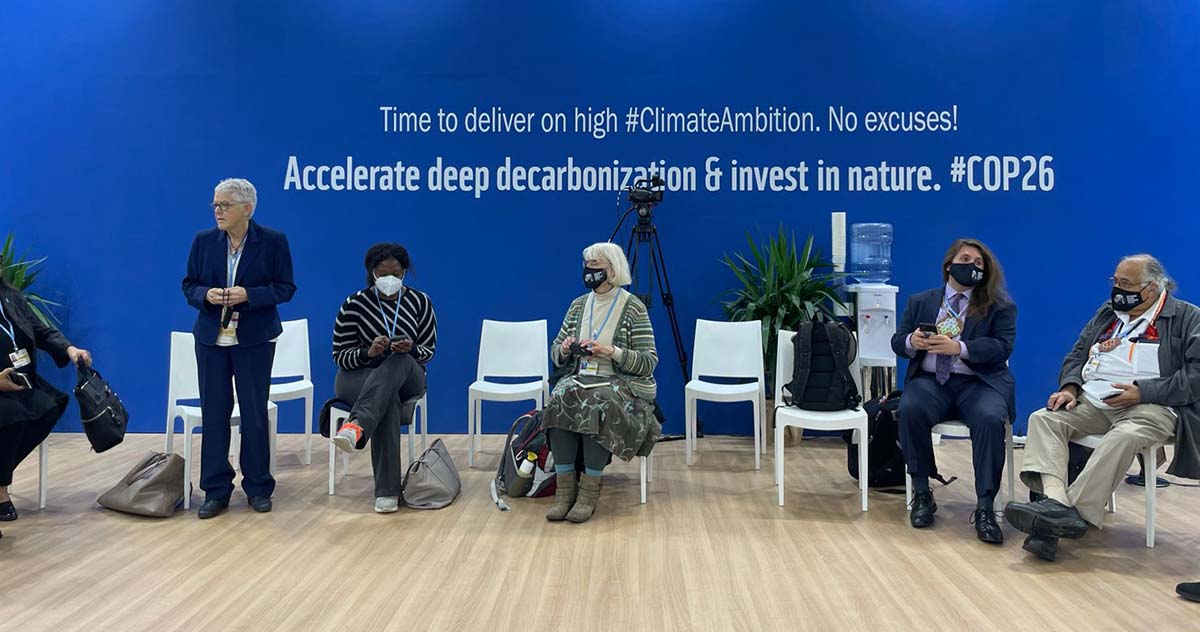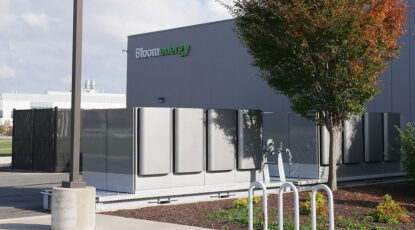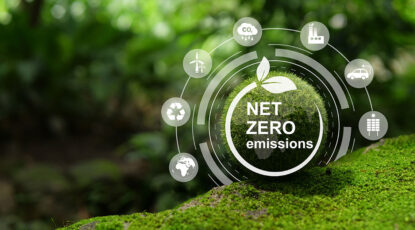
Carlos Garcia, Federal Policy Manager, Bloom Energy at COP26
We have been searching for answers to problems like deforestation, rising sea levels, an increasing prevalence of severe storms and greenhouse gas emissions that contribute to climate change. How could one convention, held once every five years in the past, now be expected to save the world?
Each morning, as I stood patiently in line to enter Glasgow’s Scottish Event Center I wondered who was standing next to me: a climate activist, president of a nation, leader of an indigenous tribe, or a company executive? And what role could I play to help them reduce their carbon and greenhouse gas emissions now while empowering them to achieve net-zero emissions in the future? As diverse as the crowd was, so were the issues facing each community and country.
“This is a defining decade,” a climate scientist at the University of California, Los Angeles, told Foreign Policy reporters shortly after COP ended, referring to the 21st century. “If we don’t have large success this decade in bending the carbon curve … we will be producing an earth that looks very different in a few decades from now.”
As if to underline this sentiment, Simon Kofe, the foreign minister of Tuvalu, a small Pacific island nation between Hawaii and Australia, addressed COP26 attendees while standing knee-deep in water. Global sea level rise has accelerated to 3.4 millimeters per year since 1993, according to NASA measurements, and has risen nearly nine inches since 1880. As a result, coastal communities and island nations like Tuvalu face a rising threat of flooding, and extreme hurricanes and storms continue to increase in frequency.
Despite the pressing challenges, the mood in the conference center was hopeful. Country pavilions gleamed with pictures of their respective home country’s landscape. Some of the world’s most accomplished scientists and business leaders gave daily panel discussions on a myriad of possible solutions to the diverse issues facing our changing world. In the middle of these discussions was a growing curiosity about hydrogen and innovative clean, renewable technologies that could supplement wind and solar in the transition to a zero-carbon future. Meanwhile, experts agree that hydrogen is central to achieving a net-zero carbon future in this century.
While we may not leave COP26 with a way to stop CO2 emissions immediately, we cannot wait to act. There are solutions to dramatically reduce carbon and green hose gasses now. COP was meant to bring us together to connect with the countries, organizations, and people to work together to meet those goals
Enter Bloom Energy.
As I met with domestic and international communities and businesses, ranging from the Governors of several U.S. states to Ministers of countries and the White House National Climate Advisor, an important message presented itself: Who can help us get to a cleaner and greener economy?
The overwhelming answer was that it will take collaboration between governments and the industries creating clean, resilient technologies working together to achieve our goals. We need policymakers and diplomats to make the pledges, spur action and encourage their communities to join us in the transition to clean energy. And while organizing ambassadors from nearly 200 countries to negotiate ways to slash their methane emissions by 30 percent is a start, we need industry and policymakers to work together to follow up on those pledges.

Carlos Garcia and Bill Gates at COP26
While zero-carbon solutions such as green hydrogen exist, energy produced from that green hydrogen is 2-3 times more expensive than legacy fossil fuel alternatives. Because of the costly nature of a zero-carbon economy today, transitioning to solutions like green hydrogen overnight is difficult without incentives or policy changes. But there are things we can do today.
Bloom has successfully shown that green hydrogen can be blended up to 50 percent into a liquid natural gas (LNG) pipeline, helping to decarbonize natural gas infrastructure now. While natural gas may not be an ideal long-term solution, it is important that we can and should take steps now to limit CO2 emissions, which accumulate in the atmosphere over time.
During COP, I shared Bloom’s vision: we make clean, reliable energy affordable for everyone in the world. Bloom’s fuel-flexible, future-proof technology provides clean and resilient power to help reach those difficult to achieve climate goals. Through long and meaningful conversations, we created meaningful connections in an environment where everyone is focused on a common goal.
It became abundantly clear during my conversations that the world is looking to technology, like Bloom’s, to help achieve their climate goals.
Collaborating for climate resilience
The two common themes in many discussions I attended were resiliency and pollution, especially as it relates to environmental justice. Microgrids, such as those powered by Bloom’s fuel cells, can significantly improve a community’s resiliency by providing 24/7 uninterruptible power. As a result, organizations and communities can reduce energy costs long-term, reduce local air pollutants by replacing backup diesel generators or peaker plants with clean energy, and provide community resilience under extreme weather threats.
Losing power during a storm could make the difference between paying your rent on time or falling behind on your bills for many low-to-middle income communities. When an extreme weather disruption occurs, such as a storm or a heatwave, knocking out the power to a local community, employees cannot work, and paychecks are cut. When a heatwave knocks out the power to a local grocery store and food supplies perish due to lack of refrigeration, people may have to spend more money to travel and buy more expensive food at a distant deli or grocery store. People should not have to choose between having food at their tables and paying their rent or medical bills because the electrical grid wasn’t ready to handle the effects of climate change. This is the vision Bloom is fighting to make a reality every day, and is the vision I had to honor to share with COP attendees.
Being a “first-time COP-er,” I found myself in awe of the meaningful conversations and connections one can make by simply showing up and being authentic. When you listen to someone with respect, empathy, and positivity, the world of possibilities opens to you. That is what I love about Bloom. I was not sent to COP with a business agenda or quota, but rather to learn and listen, specifically how we can address big problems.
Whether it be a comprehensive community energy plan, utility-scale energy generation, or the development of a more circular economy, we were there to listen. Listen, uplift voices, and hopefully support those efforts with innovative solutions from Bloom.



